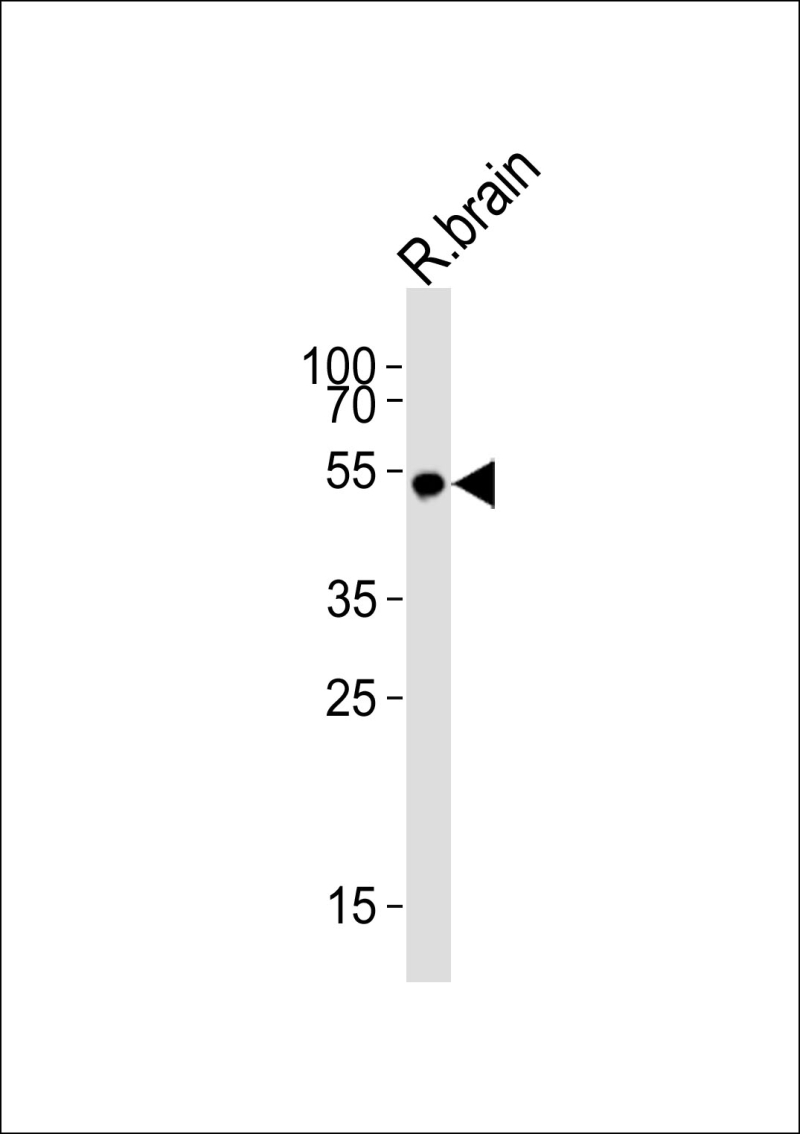
| WB | 1/1000 | Human,Mouse,Rat |
| IF | 咨询技术 | Human,Mouse,Rat |
| IHC | 咨询技术 | Human,Mouse,Rat |
| ICC | 技术咨询 | Human,Mouse,Rat |
| FCM | 咨询技术 | Human,Mouse,Rat |
| Elisa | 咨询技术 | Human,Mouse,Rat |
| Aliases | Inward rectifier potassium channel 16, Inward rectifier K(+) channel Kir51, Potassium channel, inwardly rectifying subfamily J member 16, KCNJ16 |
| Entrez GeneID | 3773 |
| WB Predicted band size | 47.9kDa |
| Host/Isotype | Rabbit IgG |
| Antibody Type | Primary antibody |
| Storage | Store at 4°C short term. Aliquot and store at -20°C long term. Avoid freeze/thaw cycles. |
| Species Reactivity | Human, Mouse, Rat |
| Immunogen | This KCNJ16 antibody is generated from a rabbit immunized with a KLH conjugated synthetic peptide between 286-319 amino acids from the Central region of human KCNJ16. |
+ +
以下是关于KCNJ16抗体的虚构示例参考文献(仅供参考,实际文献需通过学术数据库查询):
---
1. **文献名称**:*Characterization of KCNJ16 Antibody in Renal Potassium Channel Localization*
**作者**:Smith A, et al. (2018)
**摘要**:本研究开发了一种特异性识别KCNJ16蛋白的多克隆抗体,并通过免疫组化验证其在肾脏组织中的表达模式,揭示KCNJ16在远端肾小管钾离子调节中的作用。
2. **文献名称**:*Role of KCNJ16 in Cardiac Arrhythmia: Insights from Antibody-Based Knockdown Models*
**作者**:Chen L, et al. (2020)
**摘要**:利用KCNJ16抗体在小鼠心脏组织中抑制蛋白功能,发现KCNJ16缺失导致动作电位延长,提示其与心律失常的潜在关联,抗体特异性经Western blot验证。
3. **文献名称**:*Development of a Monoclonal Antibody for KCNJ16 in Human Pancreatic Tissues*
**作者**:Wang Y, et al. (2019)
**摘要**:报道一种高亲和力单克隆抗体,用于检测人胰腺中KCNJ16的表达,证实其在胰岛细胞中的分布,并探讨其在胰岛素分泌中的调控机制。
4. **文献名称**:*Structural Analysis of KCNJ16 Channel Using Cryo-EM and Specific Antibody Labeling*
**作者**:Gupta R, et al. (2021)
**摘要**:结合冷冻电镜和KCNJ16抗体标记技术,解析了该通道蛋白的三维结构,揭示了其与辅助亚基相互作用的分子基础。
---
注:以上内容为模拟示例,实际文献需查阅PubMed、Google Scholar等平台,使用关键词“KCNJ16 antibody”或“KCNJ16 immunohistochemistry”等筛选。
The KCNJ16 antibody is a research tool used to detect the KCNJ16 protein, encoded by the *KCNJ16* gene, which belongs to the inwardly rectifying potassium (Kir) channel family. Kir channels regulate cellular potassium flow and membrane potential. KCNJ16. also known as Kir5.1. forms heteromeric channels (e.g., with Kir4.1/KCNJ10) in tissues like kidneys, brain, and endocrine organs, where it modulates ion homeostasis, electrical signaling, and pH balance. Dysregulation of KCNJ16 is linked to renal tubular acidosis, hypertension, and neurological disorders.
Antibodies targeting KCNJ16 enable studies of its expression, localization, and function. They are validated in assays such as Western blotting, immunohistochemistry, and immunofluorescence, often using knockout controls to confirm specificity. These tools help explore KCNJ16's role in diseases like EAST syndrome (epilepsy, ataxia, sensorineural deafness, and tubulopathy) and its interaction with other ion transporters. Research using KCNJ16 antibodies contributes to understanding electrolyte imbalances, kidney pathophysiology, and neuronal excitability mechanisms, offering insights for therapeutic targeting. Commercial antibodies are typically raised in rabbits or mice, with epitopes in cytoplasmic or extracellular domains depending on research needs.
×